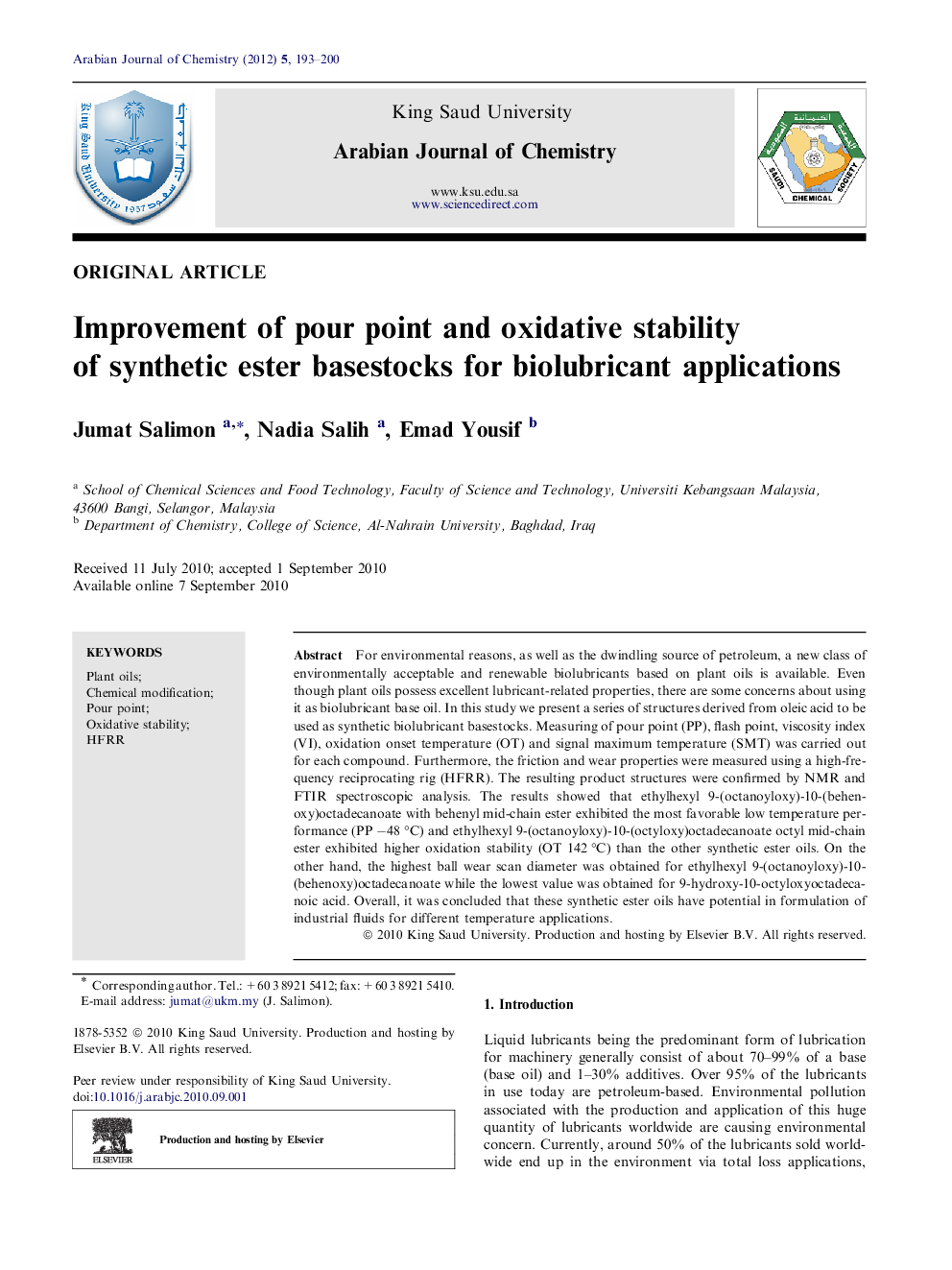| Article ID | Journal | Published Year | Pages | File Type |
|---|---|---|---|---|
| 1251184 | Arabian Journal of Chemistry | 2012 | 8 Pages |
For environmental reasons, as well as the dwindling source of petroleum, a new class of environmentally acceptable and renewable biolubricants based on plant oils is available. Even though plant oils possess excellent lubricant-related properties, there are some concerns about using it as biolubricant base oil. In this study we present a series of structures derived from oleic acid to be used as synthetic biolubricant basestocks. Measuring of pour point (PP), flash point, viscosity index (VI), oxidation onset temperature (OT) and signal maximum temperature (SMT) was carried out for each compound. Furthermore, the friction and wear properties were measured using a high-frequency reciprocating rig (HFRR). The resulting product structures were confirmed by NMR and FTIR spectroscopic analysis. The results showed that ethylhexyl 9-(octanoyloxy)-10-(behenoxy)octadecanoate with behenyl mid-chain ester exhibited the most favorable low temperature performance (PP −48 °C) and ethylhexyl 9-(octanoyloxy)-10-(octyloxy)octadecanoate octyl mid-chain ester exhibited higher oxidation stability (OT 142 °C) than the other synthetic ester oils. On the other hand, the highest ball wear scan diameter was obtained for ethylhexyl 9-(octanoyloxy)-10-(behenoxy)octadecanoate while the lowest value was obtained for 9-hydroxy-10-octyloxyoctadecanoic acid. Overall, it was concluded that these synthetic ester oils have potential in formulation of industrial fluids for different temperature applications.
